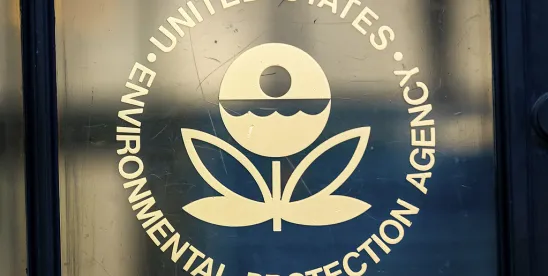Companies using formaldehyde in their manufacturing processes and/or selling products incorporating formaldehyde-containing components from upstream suppliers face significant challenges in an evolving regulatory landscape. Earlier this year, the US Environmental Protection Agency (EPA) published its 2024 Draft Risk Assessment for formaldehyde prepared under the Toxic Substances Control Act (TSCA) (EPA 2024 Draft TSCA Assessment).15 U.S.C. §§ 2601-26291 Previously, we discussed the potential for increased regulatory scrutiny into the use of formaldehyde with the release of the EPA’s 2022 Draft Formaldehyde Assessment under its Integrated Risk Information System (IRIS) (EPA 2022 Draft IRIS Assessment).2 EPA finalized its IRIS Toxicological Review of Formaldehyde (Inhalation) in August of 2024, with the principal findings that formaldehyde is carcinogenic to humans by the inhalation route of exposure.3 With the IRIS and TSCA risk assessments developing in tandem, the EPA is sending a clear message that it views formaldehyde as a harmful substance worthy of stricter regulation. As has been seen in other contexts, this regulatory scrutiny is also likely to draw the attention of plaintiff lawyers and may result in an uptick in formaldehyde-related litigation.
Under TSCA, the EPA conducts risk evaluations to determine whether a chemical substance presents an unreasonable risk to human health or the environment when used.4 Section 2697 of the TSCA enables the EPA to regulate emission standards for formaldehyde.5 The EPA 2024 Draft TSCA Assessment primarily addresses the risk of nasopharyngeal cancer, in reliance on the EPA 2022 Draft IRIS Assessment.6 The EPA 2024 Draft TSCA Assessment found that chronic exposure to formaldehyde may result in reduced pulmonary function, increased asthma prevalence, decreased asthma control, allergy-related conditions, sensory irritation, male and female reproductive toxicity, developmental defects, nasopharyngeal cancer, and myeloid leukemia.7
The EPA 2024 Draft TSCA Risk Assessment found that personnel in workspaces that use formaldehyde face the highest risk of exposure through the inhalation of high air concentrations or by absorption through skin contact.8 At risk occupational settings include producers of various industrial chemicals such as pentaerythritol, diisocyanate, and hexamethylenetetramine. The EPA determined, with a “high degree of confidence,” that most uses of formaldehyde can lead to adverse health effects if workers are not protected from inhaling or skin contact with the chemical.9 The EPA’s focus, however, goes much further than those chronically exposed to formaldehyde in industrial work-settings. It also found those at the “next-highest risk from formaldehyde” are individuals who work with a variety of consumer products, including car wax, glues and sealants, fabrics, textiles, and leather goods treated with formaldehyde.10 The EPA again concluded skin contact is the most likely route of exposure to these products. The EPA identified “formaldehyde present in homes or other indoor places” as the third highest risk category, with common exposure sources being wood and fabric products.11
Public comment for the EPA 2024 Draft TSCA Risk Assessment closed on 14 May 2024, and EPA projects that it will issue a final risk evaluation by December 2024.12 Regulatory action upon finalization appears inevitable .
Footnotes
1 89 Fed. Reg. 18933.
2 See David Fusco et al., Formaldehyde – Why Manufacturers Should Be Paying Attention, K&L Gates Hub (Feb. 23, 2024), https://www.klgates.com/Formaldehyde-What-It-Is-and-Why-Manufacturers-Should-Be-Paying-Attention-2-22-2024.
3 IRIS Toxicological Review of Formaldehyde (Inhalation) EPA/635/R-24/162cF (August 2024), IRIS Toxicological Review of Formaldehyde (Inhalation) (Summary) (epa.gov).
4 89 Fed. Reg. 18935.
5 15 U.S.C. § 2697.
6 U.S. Env’t Prot. Agency, March 2024 Executive Summary of the Draft Risk Evaluation for Formaldehyde, at 3.
7 Id. Although, TSCA risk evaluations modify the value assigned to cancer risk when accounting for the possibility of children’s increased susceptibility to formaldehyde. Id.
8 Id. at 4.
9 Id. at 4.
10Id. at 4-5.
11 Id. at 5.
12 U.S. Env’t Prot. Agency: Fiscal Year 2024 – Justification of Appropriation Estimates for the Committee on Appropriations, at 566-67 (March 2024) (https://www.epa.gov/system/files/documents/2024-03/fy-2025-congressional-justification-all-tabs.pdf).





 />i
/>i

